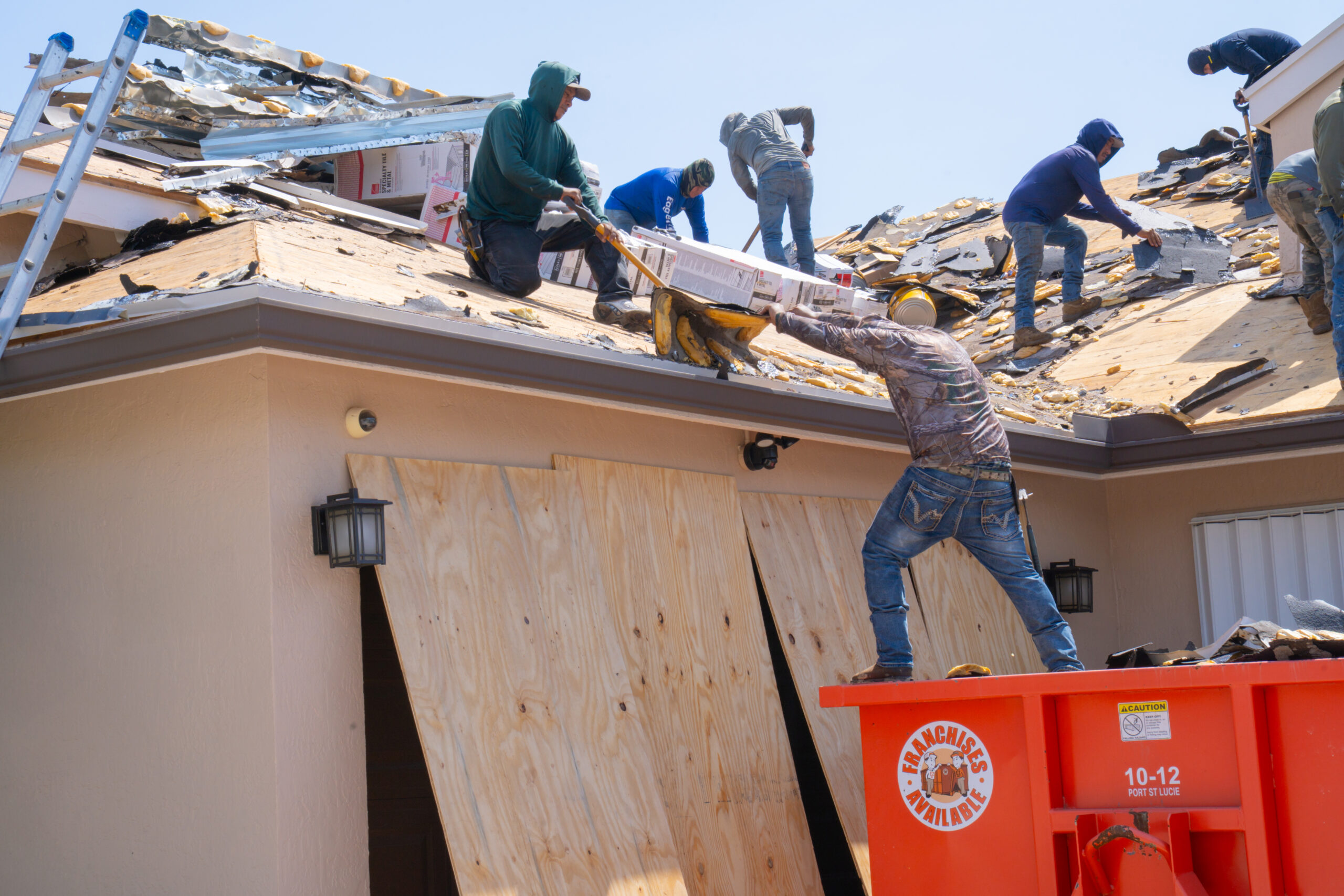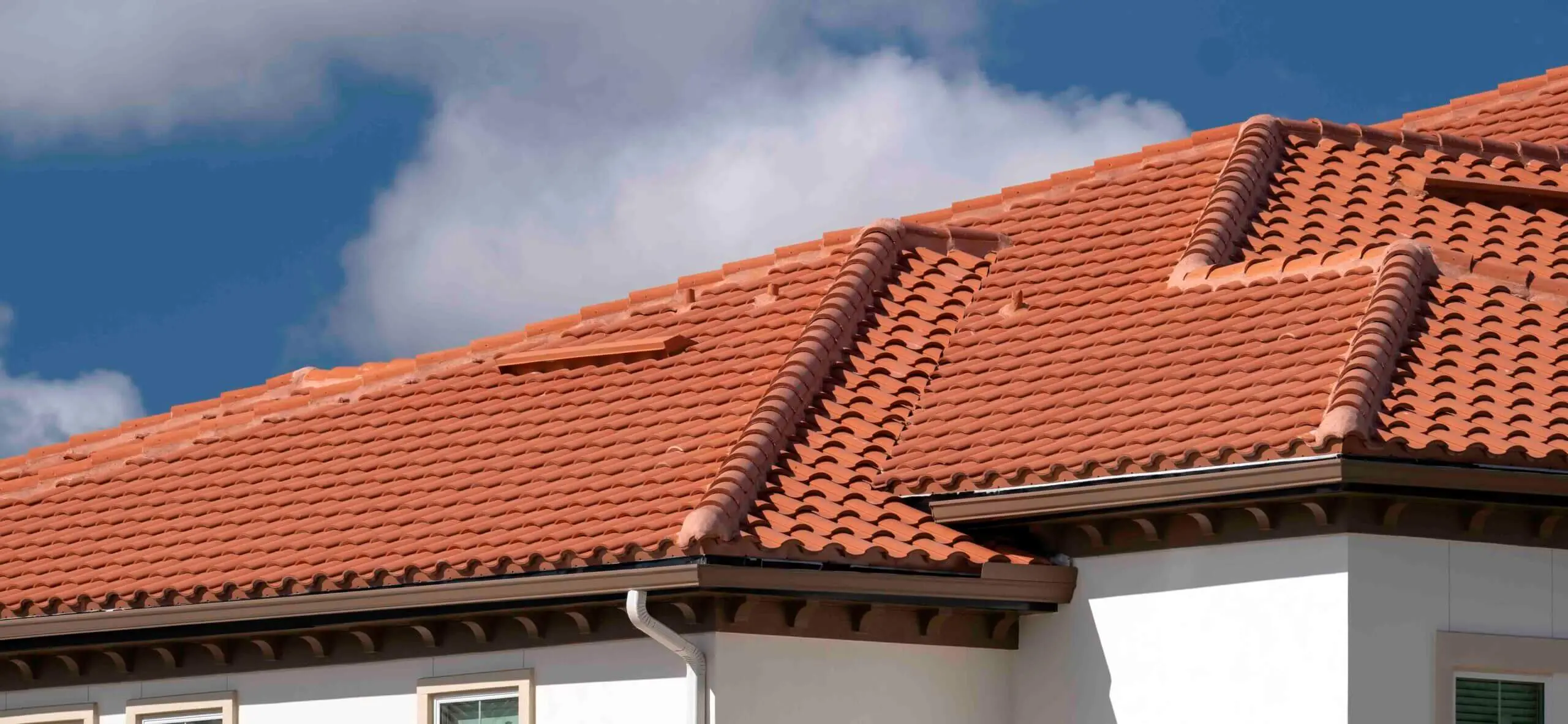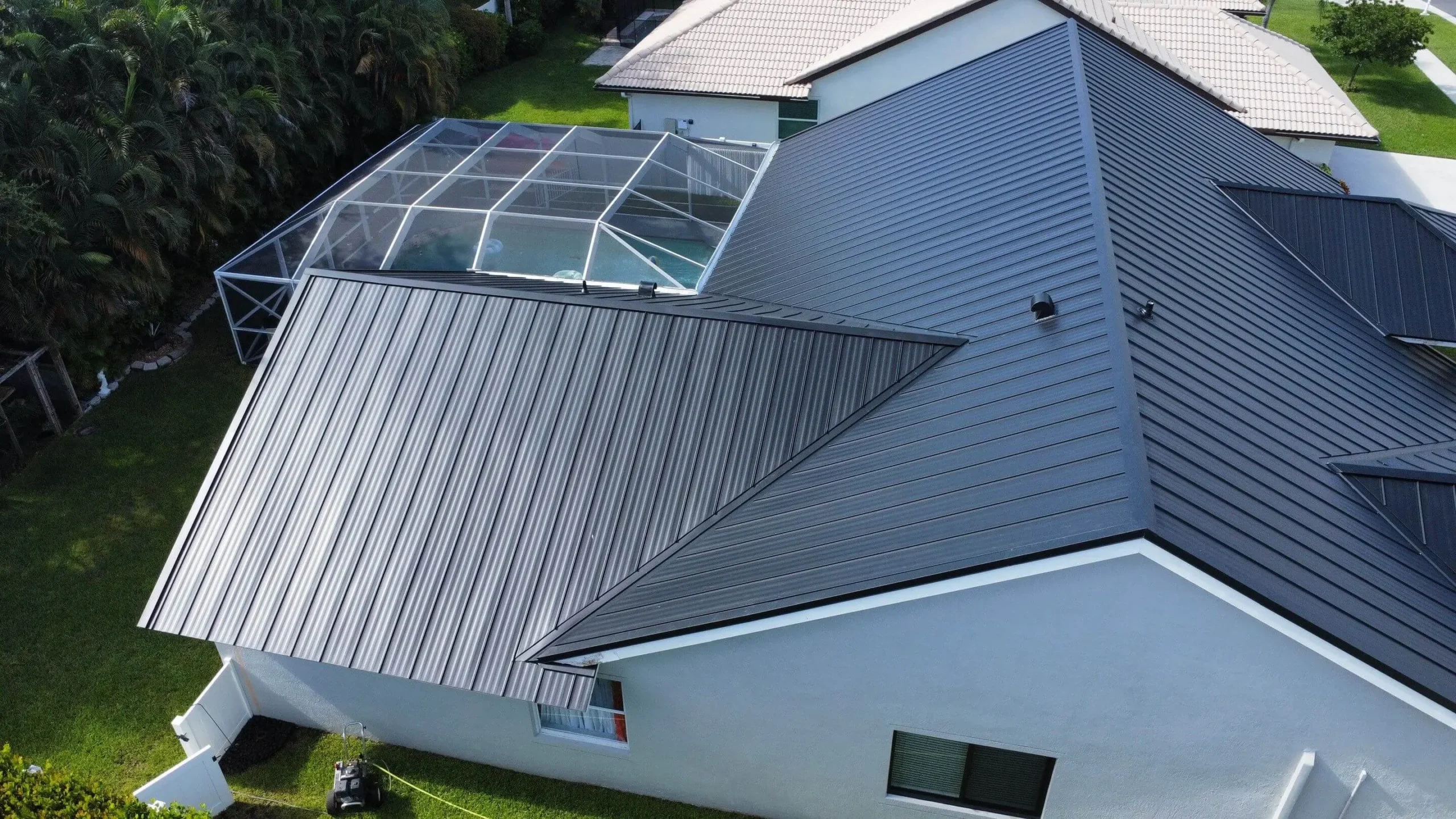Your roof is one of the most important parts of your home – it protects everything you own and everyone you love. But unlike a leaky faucet or a broken appliance, roof problems aren’t always obvious. So, how do you tell if your roof needs to be replaced? And more importantly, when is the right time to replace your roof?
At South Florida Roofing, we recognize the signs that a home needs a new roof with our thorough inspections. We know what to look for and the consequences of waiting too long. Whether you’ve just moved into an older home or you’re noticing wear and tear, it’s essential to stay ahead of roof issues before they turn into costly damage.
How to Tell If Your Roof Needs to Be Replaced
There are several clear indicators that your roof may be nearing the end of its lifespan. If you’re wondering how to tell if your roof needs to be replaced, some signs are visible from the ground, while others require a professional inspection to confirm. Here are the most common signs your roof may need replacement:
1. Age of the Roof
One of the most important factors is age. Most asphalt shingle roofs last about 20 to 25 years, while tile and metal roofs can last longer if properly maintained. If your roof is nearing or beyond this range, it’s time to start planning for a replacement – even if it still looks okay on the surface. Many issues start under the surface due to South Florida’s heavy rain seasons and high winds, so it is important to maintain your roof.
2. Curling, Cracked, or Missing Shingles
One way to know how to tell if your roof needs to be replaced is by checking the condition of your shingles. Shingles that are curling at the edges, cracked, or missing altogether are signs that your roof’s protective barrier is compromised. These gaps leave your home vulnerable to water infiltration, especially during heavy South Florida rains.
3. Granule Loss
If you’re finding lots of particles from your shingles in your gutters or at the base of downspouts, that’s a sign your shingles are deteriorating. Granules help protect your roof from the sun’s UV rays, and without them, the roof deteriorates more quickly. If you notice these signs, call South Florida Roofing immediately to replace or repair your roof before more damage occurs.
4. Water Stains or Leaks
Brown stains on your ceiling or walls can indicate roof leaks. Even small leaks can lead to mold, rot, and structural damage over time. If you see water spots or experience moisture indoors after rain, your roof is likely the culprit and needs to be replaced immediately.
5. Sagging Roofline
One clear sign of when to replace your roof is if you notice sagging or a drooping roofline. This can indicate serious structural issues. This might be caused by long-term water damage, rot in the roof decking, or even a failure in the framing. It’s a red flag that should never be ignored.
6. Mold, Moss, or Algae Growth
While moss or algae might seem like a cosmetic issue – and we see a lot of it in Florida – it can trap moisture and accelerate the breakdown of your roofing materials. In humid climates like ours in South Florida, this is a common issue, and it can be a sign that the roof is not draining properly.
7. Frequent Repairs
If you find yourself calling a roofer often for small patches or recurring leaks, it may be more cost-effective in the long run to replace the roof altogether. The experts at South Florida Roofing can help with these repairs, or provide you with a new, high-quality roof that will last.
The Risks of Delaying Roof Replacement
It’s easy to put off a roof replacement, especially if the damage isn’t immediately visible. But waiting too long can lead to far more expensive and disruptive problems.
- Water Damage is the most obvious consequence. Leaks can soak into your insulation, drywall, and even the structure of your home. The result is costly repairs and potential mold remediation.
- Structural Issues are another serious concern. Over time, water can rot wooden supports, compromise ceiling joists, and even weaken the foundation if not addressed.
- Higher Energy Bills may also be a consequence of a failing roof. A deteriorating roof often allows cool air to escape, forcing your HVAC system to work harder – especially in Florida’s heat.
- Insurance Claims can be denied if it’s clear that you’ve failed to maintain your roof. Many insurers view roof neglect as homeowner negligence and won’t cover damages from leaks if the roof was past due for replacement.
When to Replace Your Roof
In South Florida, timing is everything – especially with hurricane season stretching from June through November. Ideally, roof replacements should be scheduled in the dry season when the weather is more predictable, usually in the late fall or winter months.
However, if your roof shows clear signs of failure, don’t wait. Emergency repairs during storm season can be far more costly and stressful. At South Florida Roofing, we offer year-round services and can help you schedule a roof replacement quickly and efficiently – before a minor issue becomes a major headache.
Why Choose South Florida Roofing?
We understand that replacing your roof is a major investment. That’s why we’re committed to giving you expert guidance, transparent pricing, and exceptional craftsmanship every step of the way. At South Florida Roofing, we’ve helped countless homeowners across the region protect their homes with durable, long-lasting roofing systems designed for Florida’s unique climate all while working with them to get the affordable financing they need.
Our team offers detailed inspections and honest assessments. If your roof has a few more years left, we’ll tell you. If it’s time for a replacement, we’ll walk you through your options and help you find the best solution for your home and budget.
Don’t Wait Until It’s Too Late
Knowing when to replace your roof can save you thousands of dollars – and give you peace of mind, especially during hurricane season. If you’re seeing signs of wear, leaks, or aging materials, it’s time to consult with professionals you can trust.
Let South Florida Roofing help you protect your home with expert evaluations and premium roofing solutions tailored to Florida living. Contact us today to schedule your inspection and find out if it’s time to replace your roof. We’re here to help you every step of the way.



